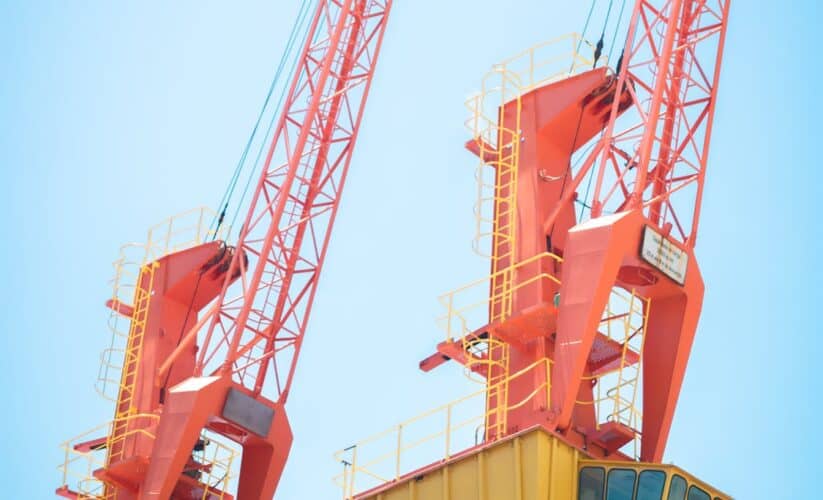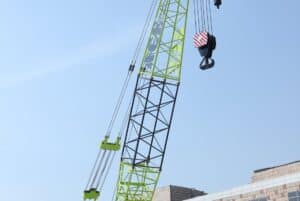
What Are the Risks of Not Using Crane Mats? Explained
Crane mats are designed to distribute the weight of heavy machinery across a broader area, preventing ground collapse and sinking. Without them, equipment can damage buried infrastructure like pipes and electrical lines, which would cost money to repair and cause delays for your worksite.
Crane mats also protect the surrounding environment by preventing soil compaction and erosion. This prevents sediment from running off worksites into nearby bodies of water, which can harm aquatic life and habitats.
Stability
During heavy lifting operations, the stability of the crane is essential to ensure safety. If the crane is not stable, it may tip or fall and cause damage to the load, putting workers in danger and potentially damaging equipment. Crane mats provide a solid foundation for cranes, helping to prevent unintended movements or tipping. In addition, they help to protect paved surfaces from the pressure of cranes and other equipment, reducing damage to roads, sidewalks, and other infrastructure.
The use of crane mats also helps to improve traction on uneven surfaces, further protecting the health and safety of workers. They are a cost-effective way to prevent accidents and ensure that the worksite is safe and productive.
Whether working in sensitive natural terrain or on construction sites, the impact of cranes and other heavy machinery can be significant. Without proper protection, cranes can cause lasting soil compaction and erosion, habitat disruption, and pollution. By providing a temporary platform for construction vehicles, crane mats reduce the risk of damage to buried pipelines, electrical lines, and other infrastructure that can lead to costly repairs, project delays, and even environmental violations. For projects requiring heavy-duty crane mats, cranemats.co offers durable solutions that can handle even the most challenging conditions, ensuring your equipment is stable and secure.
In addition to preventing damage, crane mats also help to preserve the natural state of the landscape. By allowing construction equipment to operate on a temporary surface, crane mats prevent the need for ground tracking, which can damage the environment and create unwanted cross-contamination.
By providing a solid base for construction vehicles, crane mats allow workers to focus on their tasks and increase productivity. In turn, this translates into savings for both the company and its customers. When a business prioritizes the use of quality crane mat solutions, it can make the difference between success and failure on a project.
Choosing the right crane mat solution depends on the specific needs of a job site. A site assessment can help identify any potential risks and suggest the appropriate solution. A trusted crane matting supplier will offer a variety of options for any logistical challenges that might arise on a project. In addition, they will be able to provide detailed information on the suitability of each product for a given application.
Efficiency
Crane mats offer an efficient solution for construction projects that require heavy machinery to operate over soft, muddy, or marshy ground. They distribute the weight of equipment evenly to prevent sinkage, and allow construction to progress at a faster rate. This allows for greater productivity and eliminates the need to wait for ground to dry for machinery to return to the job site.
Moreover, crane mats protect the environment from damage caused by construction. The constant movement of heavy machinery can cause rutting, soil compaction, and other types of damage that disrupt ecosystems. Mats protect the environment from this damage, and they also make it easier to restore the site after a project is completed. This saves time and money, and it ensures that the area will be usable for future projects.
Construction sites often have buried pipes, drainage lines, and service lines, and the moving of heavy machinery can disrupt these connections. Crane mats can be placed underneath heavy equipment to protect these buried utilities and prevent any accidents or disruptions to the flow of electricity or water.
Quality crane mats can be made of woods or a combination of woods with high compressive strength, and they can support the immense amount of pressure exerted by heavy equipment. In addition, they can be installed on a variety of terrain types, including swamps, wetland areas, marshes, and rocky landscapes.
Finally, crane mats can help contractors comply with local environmental regulations and standards. In many cases, it is necessary to minimize the impact of construction on sensitive ecological areas. This is a major challenge without the use of crane mats, which can mitigate environmental damage by distributing the weight of heavy machinery.
If your construction project calls for the use of crane mats, you should work with a supplier that offers various new and used options. They will conduct a thorough site assessment to understand the type of ground and terrain stability, and recommend the best matting solutions for your project. The right supplier can also provide expert logistical support, ensuring that the proper number of crane mats is delivered to your construction site and that they are placed in the correct locations.
Safety
Using crane mats reduces the risk of accidents during construction. Cranes can tip over when used on uneven surfaces, causing damage to the building project and injuring workers. If the crane slips or crashes into a structure, it can also cause significant disruption to the job site and potentially result in costly insurance claims and litigation. Fortunately, using crane mats is an easy way to mitigate this risk by creating a stable platform for your machinery.
Crane mats are made from high-quality materials that can support the weight of heavy machinery without breaking or bending under pressure. They are also designed to distribute the load of the machinery evenly, preventing ground sinkage or shifting. This helps safeguard the integrity of the subsurface environment, avoiding ecological disturbances that could otherwise be costly to repair.

Another benefit of using crane mats is that they create a solid road for trucks to drive on, keeping vehicles out of mud and sand and allowing them to navigate uneven terrain safely. This increases productivity by reducing downtime and the need for manual maneuvering. It also enables you to meet the Health and Safety Executive’s (HSE) requirements for a safe jobsite, demonstrating that you have taken steps to protect your workers from accidents during construction.
In addition, crane mats help you adhere to environmental and health and safety guidelines for your construction project. Construction companies that prioritize safety are more likely to enjoy better community relations, fostering support for their projects and facilitating faster regulatory approvals and smoother construction processes.
While originally designed for stability and safety, crane mats have emerged as an important tool for environmental protection in the construction industry. By minimizing soil disturbance and protecting vulnerable ecosystems, crane mats contribute to sustainable development practices and a greener future.
Environment
Using crane mats is a crucial element of environmentally responsible construction. The mats prevent damage to the ground and allow machinery to function more easily over uneven terrain without getting stuck. They also keep bacteria and fungi from transferring from one location to another, which is an important consideration in sensitive environments. This helps reduce the environmental impact of oil and gas projects by facilitating a faster project timeline, lower emissions, and more efficient use of resources.
Onsite work for commercial construction, civil construction, or renewable energy projects is often conducted over a variety of different types of ground. While some sites feature hard, rocky surfaces, others have soft or wet ground that is insufficient to bear the weight of heavy machinery. Without proper support, the ground can sink under equipment and cause damage, including soil erosions, that require expensive repairs.
Crane mats are the nearly invisible foundational heroes of the construction world. They distribute the immense load of machinery across a much larger area, mitigating the risk of environmental damage and preventing costly accidents and construction delays. The use of crane mats demonstrates an active commitment to safety and ecological responsibility that is appreciated by local communities, regulators, and the general public.
In addition to protecting the environment, crane mats can help you save money. By allowing equipment to operate more efficiently, crane mats can cut your operating costs by reducing time on site. This translates into more production in less time, which in turn leads to lower fuel consumption and fewer emissions.
Whether you’re working on a commercial construction, renewable energy, or pipeline construction project, the use of crane mats is essential for safely and effectively navigating challenging terrain. Look for a supplier that offers a wide range of crane mat solutions to meet your needs, and choose a quality product that is manufactured using recycled materials and complies with stringent standards regarding rigidity, psi, pin systems, compression, three-point bending, and more. For example, SYSTEM7(tm) plastic crane mats are engineered to exceed industry standards for psi, rigidity, and three-point bending, and are available with optional features like UV protection, elastomers, anti-static, and custom pin hole locations.





